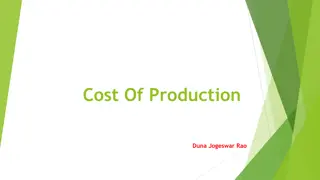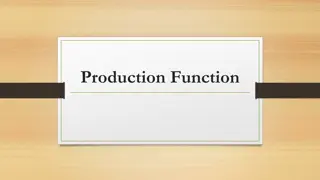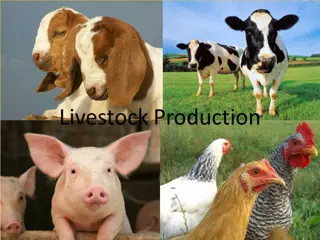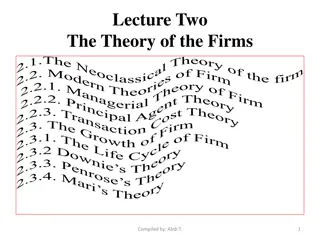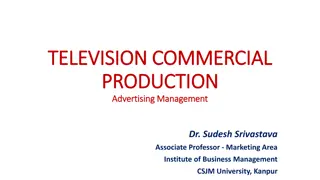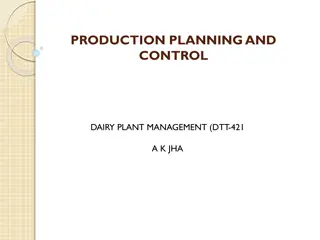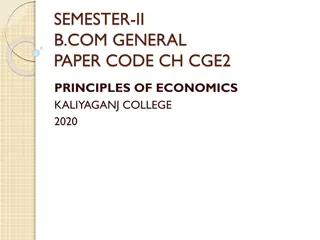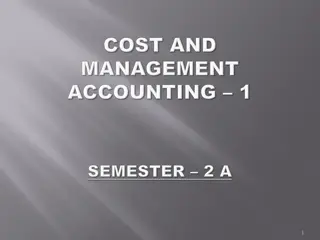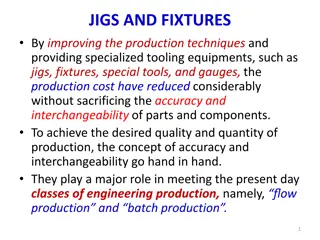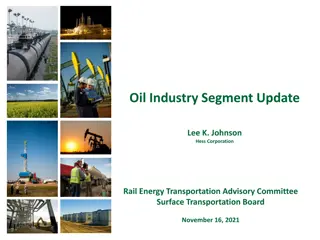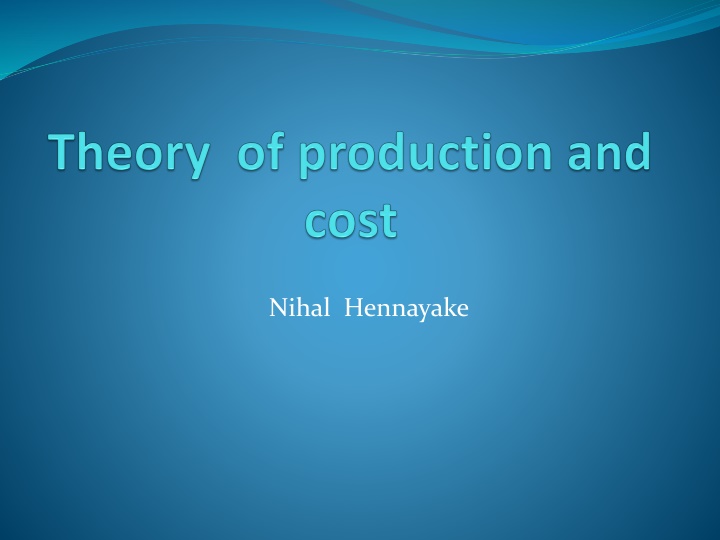
Basic Concepts of Production Theory and Cost Analysis
Discover the fundamental concepts of production theory including inputs, short run vs. long run, and sunk costs. Learn about avoidable costs and the intricacies of short-run production functions.
Download Presentation

Please find below an Image/Link to download the presentation.
The content on the website is provided AS IS for your information and personal use only. It may not be sold, licensed, or shared on other websites without obtaining consent from the author. If you encounter any issues during the download, it is possible that the publisher has removed the file from their server.
You are allowed to download the files provided on this website for personal or commercial use, subject to the condition that they are used lawfully. All files are the property of their respective owners.
The content on the website is provided AS IS for your information and personal use only. It may not be sold, licensed, or shared on other websites without obtaining consent from the author.
E N D
Presentation Transcript
Basic Concepts of Production Theory Production function Maximum amount of output that can be produced from any specified set of inputs, given existing technology Technical efficiency Achieved when maximum amount of output is produced with a given combination of inputs Economic efficiency Achieved when firm is producing a given output at the lowest possible total cost
Basic Concepts of Production Theory Inputs are considered variable or fixed depending on how readily their usage can be changed Variable input An input for which the level of usage may be changed quite readily Fixed input An input for which the level of usage cannot readily be changed and which must be paid even if no output is produced Quasi-fixed input A lumpy or indivisible input for which a fixed amount must be used for any positive level of output None is purchased when output is zero
Basic Concepts of Production Theory Short run At least one input is fixed All changes in output achieved by changing usage of variable inputs Long run All inputs are variable Output changed by varying usage of all inputs
Sunk Costs Sunk cost Payment for an input that, once made, cannot be recovered should the firm no longer wish to employ that input Not part of the economic cost of production Should be ignored for decision making purposes
Avoidable Costs Avoidable costs Input costs the firm can recover or avoid paying should it no longer wish to employ that input Matter in decision making and should not be ignored Reflect the opportunity costs of resource use
Short Run Production In the short run, capital is fixed Only changes in the variable labor input can change the level of output Short run production function Q = f (L, K) = f (L)
Average & Marginal Products Average product of labor AP = Q/L Marginal product of labor MP = Q/ L When AP is rising, MP is greater than AP When AP is falling, MPis less than AP When AP reaches it maximum, AP = MP Law of diminishing marginal product As usage of a variable input increases, a point is reached beyond which its marginal product decreases
Total, Average, & Marginal Products of Labor, K = 2 Number of workers (L) 0 1 2 3 4 5 6 7 8 9 10 Total product (Q) Average product (AP=Q/L) -- 52 56 56.7 Marginal product (MP= Q/ L) -- 52 60 58 0 52 112 170 220 258 286 304 314 318 314 50 38 28 18 10 55 51.6 47.7 43.4 39.3 35.3 31.4 4 -4
Total, Average, & Marginal Product Curves Q2 Total product Q1 Panel A Q0 L0 L1 L2 Panel B Average product L0 L1 L2 Marginal product
Short Run Production Costs Total variable cost (TVC) Total amount paid for variable inputs Increases as output increases Total fixed cost (TFC) Total amount paid for fixed inputs Does not vary with output Total cost (TC) TC = TVC + TFC
Short-Run Total Cost Schedules Output (Q) Total fixed cost (TFC) $6,000 6,000 6,000 6,000 6,000 6,000 6,000 Total variable cost (TVC) $ 0 4,000 6,000 9,000 Total Cost (TC=TFC+TVC) $ 6,000 10,000 12,000 15,000 0 100 200 300 400 500 600 20,000 28,000 40,000 14,000 22,000 34,000
Average Costs Average variable cost (AVC) TVC Q = = AVC Average fixed cost (AFC) TFC Q = = AFC Average total cost (ATC) TC Q = = = = + + ATC AVC AFC
Short Run Marginal Cost Short run marginal cost (SMC) measures rate of change in total cost (TC) as output varies TC Q TVC Q = = = = SMC
Average & Marginal Cost Schedules Output (Q) Average fixed cost (AFC=TFC/Q) Average variable cost (AVC=TVC/Q) Average total cost (ATC=TC/Q= AFC+AVC) -- $100 60 50 Short-run marginal cost (SMC= TC/ Q) 0 -- -- -- 100 200 300 400 500 600 $40 30 30 $60 30 20 $40 20 30 50 56 66.7 35 44 56.7 15 12 10 50 80 120
Short Run Cost Curve Relations AFC decreases continuously as output increases Equal to vertical distance between ATC & AVC AVC is U-shaped Equals SMC at AVC s minimum ATC is U-shaped Equals SMC at ATC s minimum
Short Run Cost Curve Relations SMC is U-shaped Intersects AVC & ATC at their minimum points Lies below AVC & ATC when AVC & ATC are falling Lies above AVC & ATC when AVC & ATC are rising
Relations Between Short-Run Costs & Production In the case of a single variable input, short-run costs are related to the production function by two relations w AP w = = = = AVC SMC and MP Where w is the price of the variable input
Relations Between Short-Run Costs & Production When marginal product (average product) is increasing, marginal cost (average cost) is decreasing When marginal product (average product) is decreasing, marginal cost (average variable cost) is increasing When marginal product = average product at maximum AP, marginal cost = average variable cost at minimum AVC

